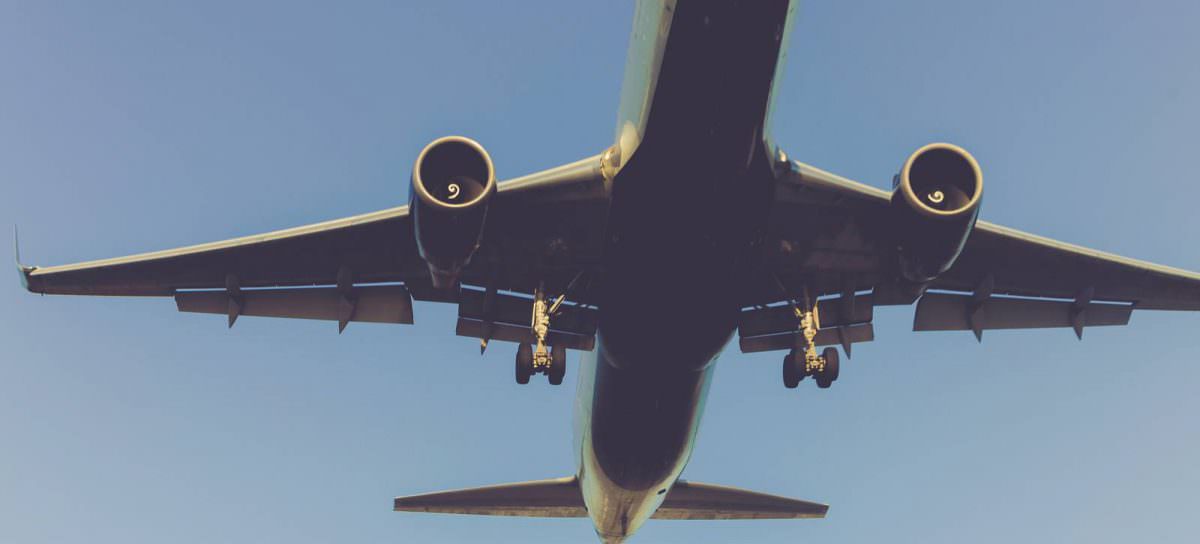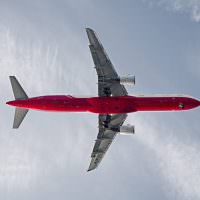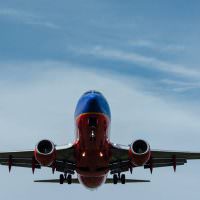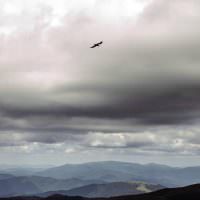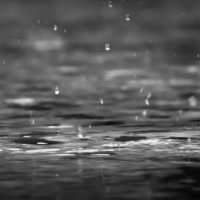Slamming on the Brakes…
How are pilots able to bring the airplane to a stop after landing?
How is it possible to get an airplane that weighs almost a hundred tons to slow down from over 170 miles per hour to a mere crawl in such a short distance after landing? Why doesn’t the plane have trouble stopping when it’s raining? These are a few of the questions that many flyers often ask about airliners when they land. There are a number of systems on a commercial jet in addition to brakes that make all of this possible. Even the design of the runway itself plays a part.
Airplanes have several tires on each landing gear, each which has its own set of brakes that function very much like the brakes on your car. After the landing touchdown, pilots typically apply the brakes to help slow the airplane. These braking systems also have anti-skid capability, which is very similar to the anti-lock braking system on your car. Essentially, this system keeps the wheels from locking up or skidding, thereby ensuring that the brakes maintain optimum efficiency in slowing the rotation of those tires. The brakes alone are capable of bringing the airplane to a stop under most circumstances, but they are far from the only tool that the pilots have for slowing the plane.
The brakes alone are capable of bringing the airplane to a stop under most circumstances, but they are far from the only tool that the pilots have for slowing the plane.
If you happen to be sitting next to a window during landing, you’ve probably noticed some large panels that extend up from the top surface of the wing immediately after touchdown. These are called “ground spoilers,” because they create aerodynamic drag and “spoil” the smooth flow of air over the wing. This system serves two purposes: (1) It creates drag (much like the experience of sticking your hand out of the window of your car as you drive down the highway) which will help to slow the plane. (2) It also disrupts the air flow over the wing, thereby reducing the wing’s ability to produce lift. This ensures that the full weight of the airplane rests on its wheels, increasing friction and ultimately the effect of the brakes.
The last tool for slowing the plane also happens to be the loudest: the engines. After landing, you’ll hear the roar and feel the rumble of the engines as both power up after the plane touches down on the runway. But how in the world do the engines help slow the plane down? Well, pilots typically utilize what are known as “thrust reversers” on the engines, which redirect the thrust forwards instead of out the back. The sights, sounds, and sensations you observe are the result of engine thrust being projected forward, helping to slow the plane down.
The thrust reversers and ground spoilers are ideal for planes because they do not rely on contact with the ground in order to be effective. Instead, they both function by effectively changing the direction or flow of air and use it to their advantage. This means that their ability to slow the airplane is not negatively impacted by other factors, like rain (which may slightly diminish the ability of tires and brakes to slow the plane). Both are excellent resources that come in handy on very rainy days.
However, even the runway itself lends a hand when it comes to dealing with rain or precipitation. The next time you fly, try to look closely at the surface of the runway. If you’re seated near a window, you might be able to notice that the runway surface has little parallel, straight lines carved along its surface. The “grooves” in the runway are purposely cut into the concrete so that when it rains, the amount of standing water or pools of water is greatly reduced. This ensures that a greater amount of contact between the tires and the pavement is maintained, increasing braking effectiveness and reducing the likelihood of any hydroplaning by the tires. Just another way to ensure that your plane can practically stop on a dime, even if mother nature tries to rain on your parade.
The “grooves” in the runway are purposely cut into the concrete so that when it rains, the amount of standing water or pools of water is greatly reduced.
When you combine the use of all these systems (brakes, ground spoilers, thrust reversers, grooved runway), you get a tremendous amount of stopping power, enabling the plane to quickly slow upon landing in just about any kind of weather conditions. Each tool is meticulously designed and maintained to ensure reliability and effectiveness. Together, they allow the pilots to slow down quickly and use much less runway, leaving plenty of pavement to spare and preserving an additional safety margin. The whole experience of rapidly slowing down after landing might feel uncomfortable for some passengers, but try to think of it all as evidence that the plane’s systems are working perfectly to ensure your safety.
